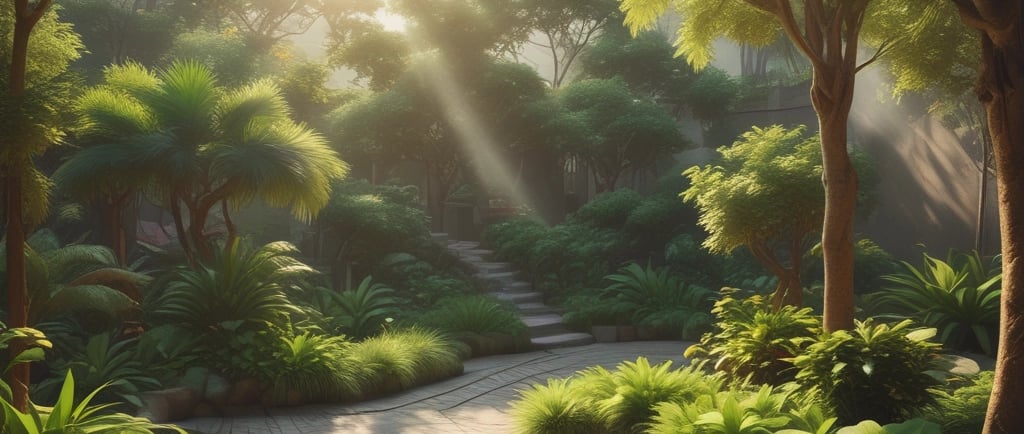Biophilic Design in Urban Planning in Vietnam
Bài viết này về giải pháp quy hoạch theo phong cách Biophilic tại Việt Nam, những kinh nghiệm quý báu trên thế giới, những lý luận về thiết kế Biophilic
12/2/20243 phút đọc


### Biophilic Design in Urban Planning in Vietnam
As urbanization accelerates across the globe, cities face numerous challenges, including pollution, loss of green spaces, and declining mental health among residents. In Vietnam, where rapid urban development has become the norm, the implementation of biophilic design holds promising potential to create more sustainable and livable urban environments. This article explores the concept of biophilic design, its importance, and how it can be applied in the urban planning landscape of Vietnam.
#### Understanding Biophilic Design
Biophilic design refers to the practice of incorporating natural elements into the built environment to foster a connection between people and nature. This design philosophy is rooted in the idea that human beings have an innate affinity for the natural world, and that integrating natural aspects into urban settings can improve quality of life, enhance well-being, and increase overall sustainability. In essence, biophilic design aims to create environments that harmonize with nature rather than alienate it.
Some key principles of biophilic design include:
1. Natural Light: Utilizing sunlight as a primary source of illumination to enhance mood and productivity.
2. Vegetation: Integrating plants and greenery into buildings and public spaces to improve air quality and aesthetic appeal.
3. Water Features: Incorporating water elements such as ponds, fountains, or streams to create soothing environments.
4. Natural Materials: Using materials that reflect nature, like wood, stone, or clay, to create a tactile and sensory experience.
5. Views of Nature: Designing buildings to provide vistas of surrounding landscapes or urban parks, encouraging a connection with the environment.
#### The Importance of Biophilic Design in Vietnam
Vietnam, with its rapid urban expansion, is experiencing significant environmental and social challenges. Urban areas like Ho Chi Minh City and Hanoi are grappling with severe air pollution, traffic congestion, and dwindling green spaces. The importance of integrating biophilic design into urban planning in Vietnam can be summarized as follows:
1. Enhancing Mental Health: Research has shown that exposure to nature can significantly improve mental health, reducing stress and anxiety. By integrating green spaces within urban developments, residents can experience a natural oasis amidst the hustle and bustle of city life.
2. Promoting Biodiversity: Incorporating green corridors and parks into urban design can facilitate the movement of various species, promoting urban biodiversity and the ecological balance required for sustainable cities.
3. Combatting Urban Heat Island Effect: Urban areas tend to be significantly warmer than their rural surroundings due to the prevalence of concrete and asphalt. Biophilic design, with its emphasis on greenery and water features, can mitigate this effect, leading to cooler urban climates.
4. Encouraging Community Interaction: Green spaces designed with communal areas can serve as social hubs, enhancing community bonding and fostering a sense of belonging among residents.
5. Supporting Sustainable Development: With an increasing emphasis on environmental issues, biophilic design aligns with sustainable development goals, providing holistic solutions to urban problems.
#### Case Studies and Examples
To illustrate the potential of biophilic design in Vietnam, several urban projects stand out:
1. The Crescent Lake Project in Ho Chi Minh City: This development integrates a large public park around a man-made lake, accommodating various recreational activities while providing a much-needed green space for the community.
2. Thao Dien Urban Area: This residential development incorporates lush gardens, water features, and ample green spaces that enhance residents' daily experiences, illustrating the principles of biophilic design.
3. The Hanoi Green Spaces Initiative: As part of efforts to increase greenery in Hanoi, several programs have been launched to transform abandoned lots and neglected areas into urban parks, aiming to balance urban density with ecological sustainability.
#### Challenges to Implementing Biophilic Design
While the benefits of biophilic design are clear, challenges remain in its implementation within the framework of urban planning in Vietnam:
1. Land Use Conflicts: The high demand for residential and commercial space often leads to the prioritization of built environments over green spaces. Urban planning policies must balance development needs with ecological considerations.
2. Awareness and Education: There is a lack of widespread understanding of biophilic design among developers and urban planners, necessitating educational programs and workshops to promote its principles.
3. Funding and Resources: Initiating biophilic projects may require significant investment in terms of both time and resources, creating an obstacle for local governments and private developers.
#### Moving Forward
To fully realize the potential of biophilic design in urban planning, a multi-faceted approach is required. Collaboration among government agencies, NGOs, and community stakeholders is essential to promote policies that favor the integration of nature within urban settings.
1. Policy Development: Government regulations should incentivize developers to incorporate green spaces into their projects, perhaps through tax benefits or expedited permit processes.
2. Public Engagement: Involving the community in the planning process can ensure that green spaces meet the needs and desires of residents, fostering ownership and commitment to maintaining these areas.
3. Education and Training: Creating educational initiatives to train urban planners and designers in biophilic principles can enhance the overall quality and acceptance of such initiatives throughout the country.
#### Conclusion
Biophilic design presents a vital pathway for enhancing urban planning in Vietnam, offering solutions to some of the most pressing challenges posed by rapid urbanization. By leveraging the intrinsic human connection to nature, cities can become healthier, more sustainable, and more vibrant spaces. The future of urban Vietnam can be envisioned not solely as concrete jungles, but as thriving ecosystems where residents live in harmony with nature.
